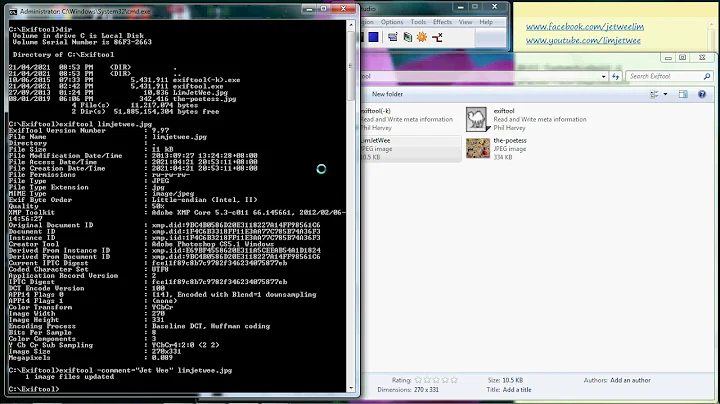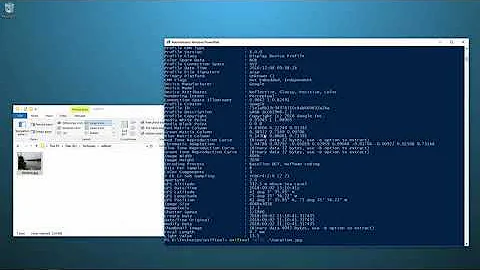How can I modify the EXIF orientation tag of an image?
Solution 1
You can retrieve the existing orientation information via exiftool as follows:
exiftool -Orientation -n image.jpg
This will display the internal value of the orientation information held in the MIE tags. You can return the value as an English string by omitting the -n flag. You can find additional information here regarding particular rotation/orientation values.
Changing the orientation data with exiftool can be done as follows:
exiftool -Orientation=1 -n image.jpg
Here, the orientation is set to 1, indicating no rotation. These numbers are defined as per the EXIF specification; you can see what effect different rotation values have in the link above.
(note: you must use the -n argument when setting orientation to indicate that the value is numeric. If you forget, exiftool will interpret the orientation=x number as a string and set the wrong rotation ie. exiftool -orientation=1 image.jpg will actually set the orientation to 3 which is 'Rotate 180')
Solution 2
My solution was the same as @Breakthrough, but I had to put the -n before -Orientation, such as
exiftool -n -Orientation=1 image.jpg
Related videos on Youtube
A. Savva
Updated on September 18, 2022Comments
-
 A. Savva over 1 year
A. Savva over 1 yearI am uploading programmatically a report on the server through the use of
rs.exeand a visual basic file. When the user views the report, the server asks for credentials to log in to the Data Source.Now, when I upload a report through Visual Studio, there is an option to use specific credentials that you can pre-set so the user is not prompted. I also notice that there is a setting in the report where you can define credentials.
My question is, how do I enable the use of specific data source credentials on uploading the report with Visual Basic so the user is not prompted for the data source credentials?
My VB code:
Public Sub Main() Try Dim definition As [Byte]() = Nothing Dim warnings As Warning() = Nothing Dim stream As FileStream = File.OpenRead(RDL_LOCATION) definition = New [Byte](stream.Length) {} stream.Read(definition, 0, CInt(stream.Length)) warnings = rs.CreateReport(REPORT_NAME, "/" + REPORT_FOLDER, True, definition, Nothing) If Not (warnings Is Nothing) Then Dim warning As Warning For Each warning In warnings Console.WriteLine(warning.Message) Next warning Else AddPolicies("/" + REPORT_FOLDER + "/" + REPORT_NAME, "False") Console.WriteLine("Report: {0} PUBLISHED!", REPORT_NAME) End If Catch e As IOException Console.WriteLine(e.Message) Console.Read() End Try End Sub






